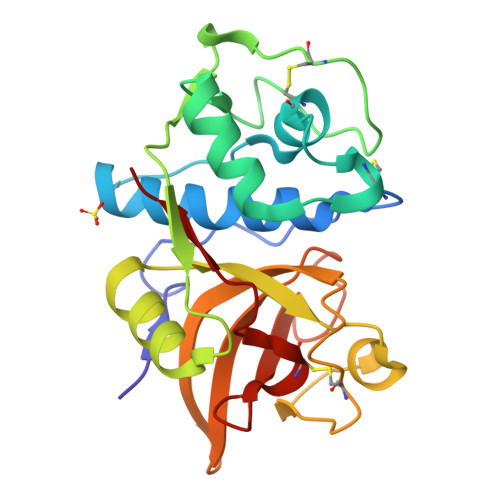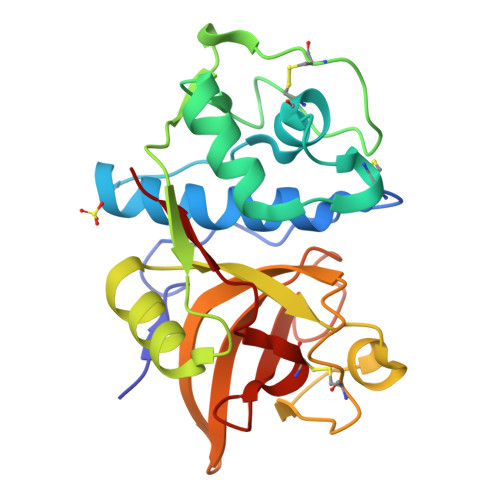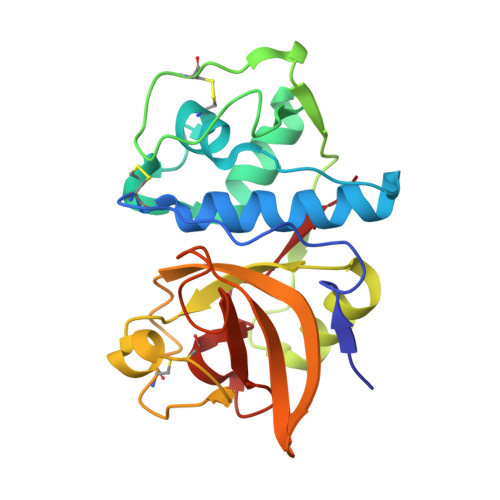Affinity Crystallography: A New Approach to Extracting High-Affinity Enzyme Inhibitors from Natural Extracts.
Aguda, A.H., Lavallee, V., Cheng, P., Bott, T.M., Meimetis, L.G., Law, S., Nguyen, N.T., Williams, D.E., Kaleta, J., Villanueva, I., Davies, J., Andersen, R.J., Brayer, G.D., Bromme, D.(2016) J Nat Prod 79: 1962-1970
- PubMed: 27498895
- DOI: https://doi.org/10.1021/acs.jnatprod.6b00215
- Primary Citation of Related Structures:
4YV8, 4YVA - PubMed Abstract:
Natural products are an important source of novel drug scaffolds. The highly variable and unpredictable timelines associated with isolating novel compounds and elucidating their structures have led to the demise of exploring natural product extract libraries in drug discovery programs. Here we introduce affinity crystallography as a new methodology that significantly shortens the time of the hit to active structure cycle in bioactive natural product discovery research. This affinity crystallography approach is illustrated by using semipure fractions of an actinomycetes culture extract to isolate and identify a cathepsin K inhibitor and to compare the outcome with the traditional assay-guided purification/structural analysis approach. The traditional approach resulted in the identification of the known inhibitor antipain (1) and its new but lower potency dehydration product 2, while the affinity crystallography approach led to the identification of a new high-affinity inhibitor named lichostatinal (3). The structure and potency of lichostatinal (3) was verified by total synthesis and kinetic characterization. To the best of our knowledge, this is the first example of isolating and characterizing a potent enzyme inhibitor from a partially purified crude natural product extract using a protein crystallographic approach.
Organizational Affiliation:
Department of Oral Biological and Medical Sciences, Faculty of Dentistry, ‡Department of Biochemistry and Molecular Biology, Faculty of Medicine, §Department of Chemistry and Earth, Ocean & Atmospheric Sciences, Faculty of Science, ⊥Department of Microbiology, Faculty of Science, and ∥Centre for Blood Research, University of British Columbia , Vancouver, BC Canada , V6T 1Z3.



















